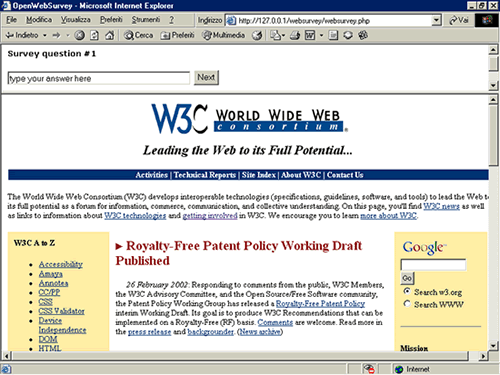MB2002
 | I presented at Measuring Behaviours 2002 a work regarding remote web testing using OpenWebSurvey, prepared with Vitaveska Lanfranchi. OpenWebSurvey is a software for remote testing that we are developping and using at Turin University. In the following lines you can read the abstract describing the project. Slides used for the presentation are avaible in pdf format.
|
Remote web usability testing | ||||||||||
Remote usability testing allows researchers to evaluate the usability of web sites gathering information from remote users [1]. Problems in usability testingAlthough it is common to run usability tests in research laboratories there are some situations in which this is not possible because it is difficult to find a sufficient and significant number of test users willing or able to participate. Testing modelOpenWebSurvey will allow storing data about visited pages (load time, mouse movement and clicks, keyboard strokes, scrollbar movements, arrival time), about the entire session (visited pages, ip address, total visit time, page visit time, general information about the user agent) and about survey answers. References[1] Watt, J., "Using the Internet for Quantitative Survey Research", Quirk's Marketing Research Review, June/July, 1997 |
